Tom's Guide Verdict
By combining the best attributes of a phone and a car’s on-board diagnostics, the Hudway Drive can show you the automotive basics alongside directions and text messages. Too bad it costs as much as a low-cost phone.
Pros
- +
Includes self-contained projection screen
- +
Integrates OBD and phone data
- +
Easy to read display
Cons
- -
Big
- -
Expensive
Why you can trust Tom's Guide
Size: 7.3 x 6.3 x 4.0 inches
Weight: 9.0 ounces
Power: 12-volt accessory outlet
Display size: 1.8-inches
Color/Monochrome: Color
Number of parameters displayed: 11
Alarms: Yes
With the ability to draw data from a phone and wireless OBD module, the Hudway Drive is the most sophisticated add-on heads-up display available — rivaling many built-in units on new cars.
Not only can it show basic stats, like speed, it also features GPS directions and text messages. Just be warned, the Hudway Drive is among the most expensive and biggest HUDs and runs the risk of blocking the view of the road ahead. Still, it’s nothing short of the best way to see on-the-road information without taking your eyes off the road. That's why it's the best car heads-up display.
Hudway Drive review: Price and availability
One of the most expensive heads-up displays available, the $279 Hudway has the payoff of using both a wireless OBD module and your phone to combine a huge amount of data. At the other extreme is the $50 Hudway Glass that projects the output of a phone’s display onto its internal screen.
Hudway Drive review: Design and features
Hudway Drive may be one of the largest add-on HUD systems on the market, but it’s also one of the most capable. At 7.3 x 6.3 x 4.0 inches, it dwarfs the likes of the already-large Pyle PHUD 180BD. Made of matte black plastic it has thoughtfully designed fold out wings that make it adaptable to a variety of dashboard surfaces — while adhesive helps keep it in place.
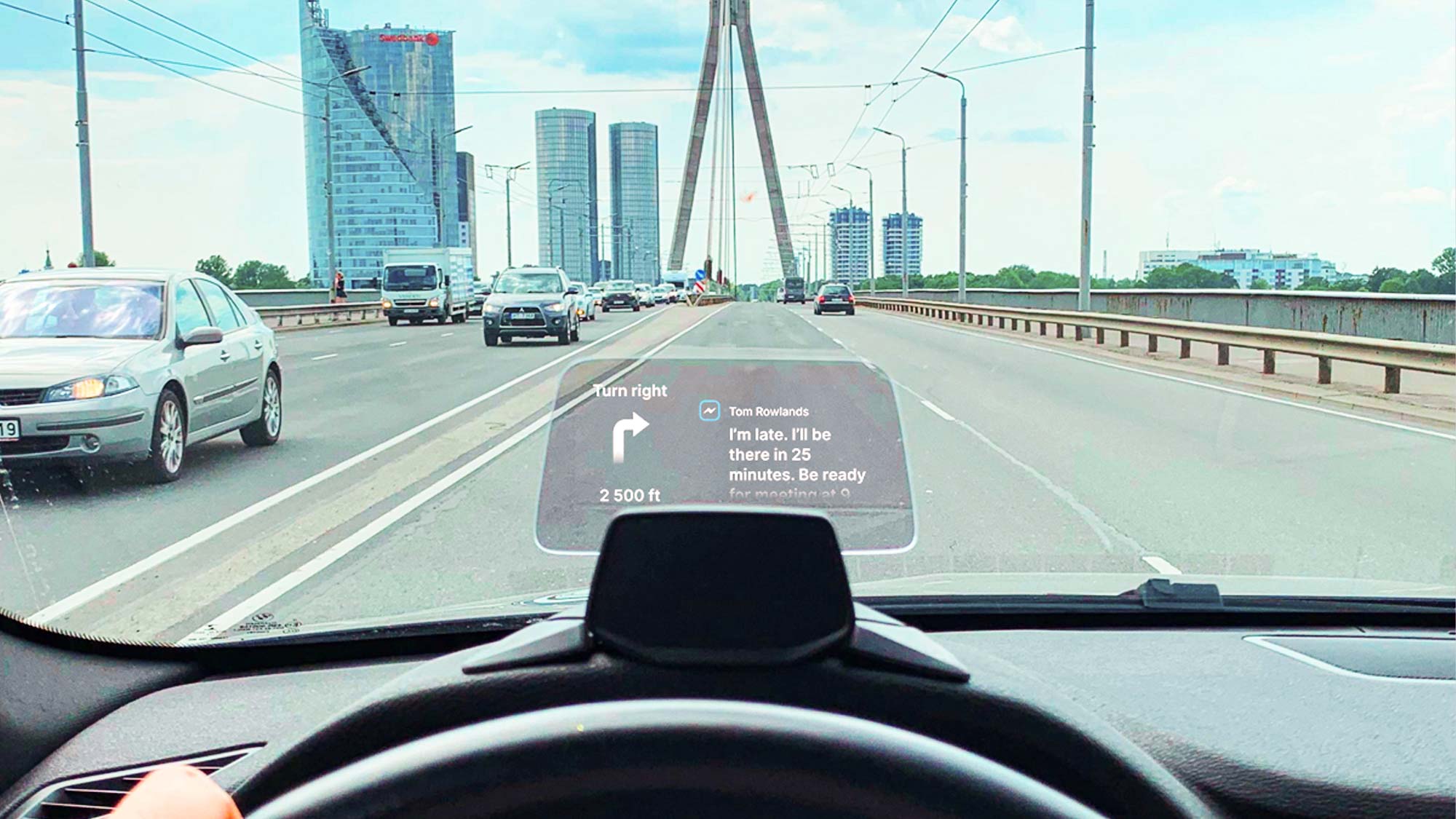
Inside, the Drive has a 1.8-inch, 480 x 240 pixel, color liquid crystal screen which has an amazing 17,000 nits of brightness. By contrast the iPhone 13 averaged 795 nits in our testing. From the driver’s viewpoint, it projects what appears to be a 10-inch virtual image, can keep up with the sunniest day on the road and still works if you wear polarized sunglasses.
Powered by an ARM Cortex A7 quad-core processor, Drive has 2GB of RAM and 8GB of flash storage space for its software and settings. Like the Pyle PHUD 180BD, the Drive projects its image onto a concave plastic screen. It can’t project the image on the windshield, sadly, but can fold flat when not in use.
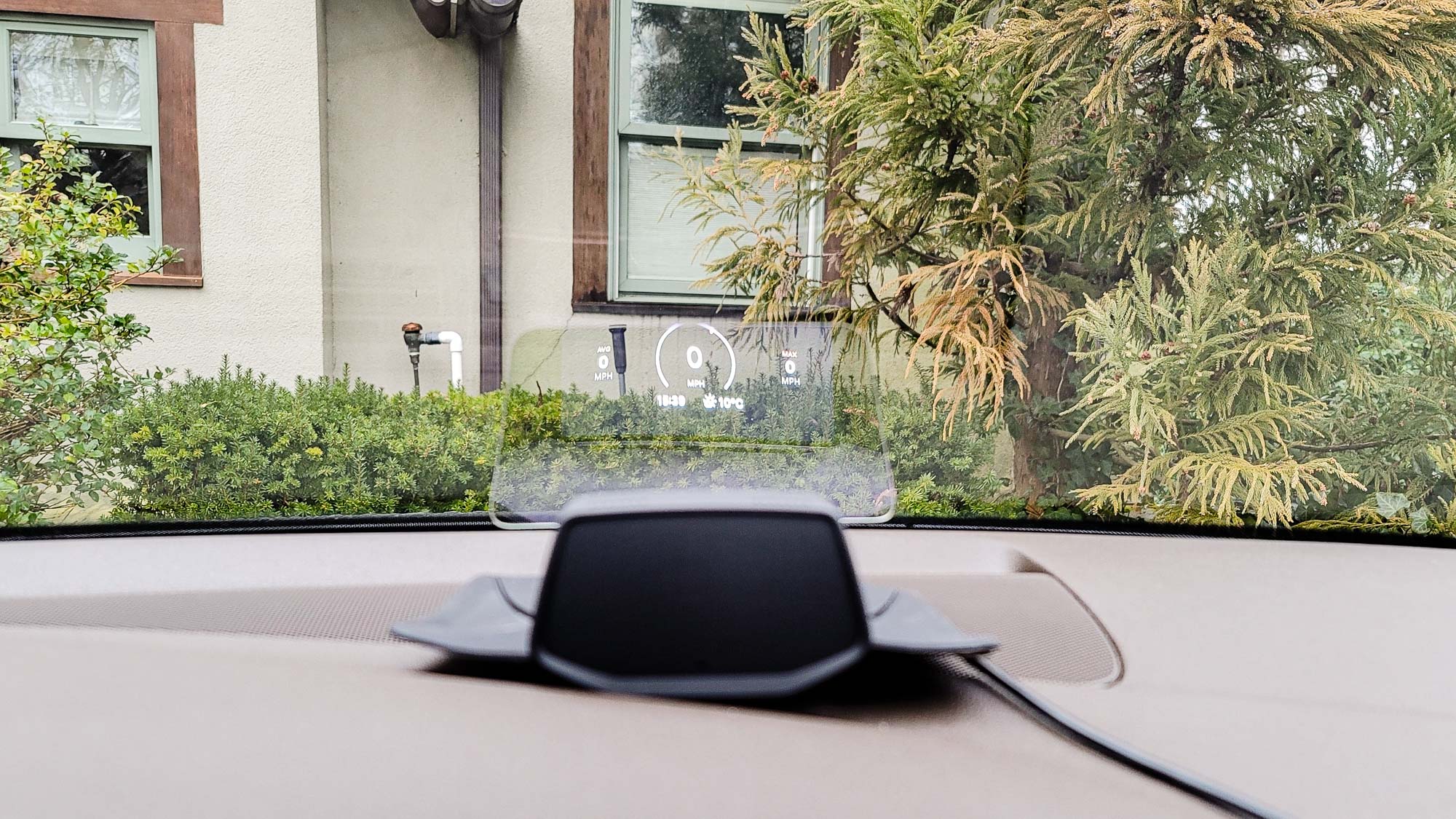
The Drive has three connections, each for a different aspect of its operations. In addition to using Bluetooth Low Energy to connect to the included wireless ELM327 OBD-II connection module, the system uses Bluetooth to sync with your phone. That means it can pull over GPS directions, phone calls, text messages and some road tunes. It can also mirror what’s on your phone or tablet over a Wi-Fi link.
The Drive displays a range of car-centric information, like speed, time, temperature, fuel economy, battery voltage, engine coolant and oil temperature. If that somehow wasn't enough Hudway plans to add more OBD-based data in the near future.
The Hudway Drive is powered by a 12-volt car accessory adapter, and there’s only one cable visible.
Hudway Drive review: Setup
Getting the Drive connected is more involved and time-consuming than other add-on heads-up displays. Hudway says it should work on 95 percent of cars, from Audi to Toyota.
I plugged the device into my Audi A4 AllRoad’s cigarette lighter outlet and used the included wire guides to make the installation a little neater. The setup also required installing Hudway’s Drive app (Android, iOS), which requires a range of permissions including contacts, location and notifications. It includes easy-to-follow instructions, just make sure to connect the Drive HUD itself before the wireless OBD II module.
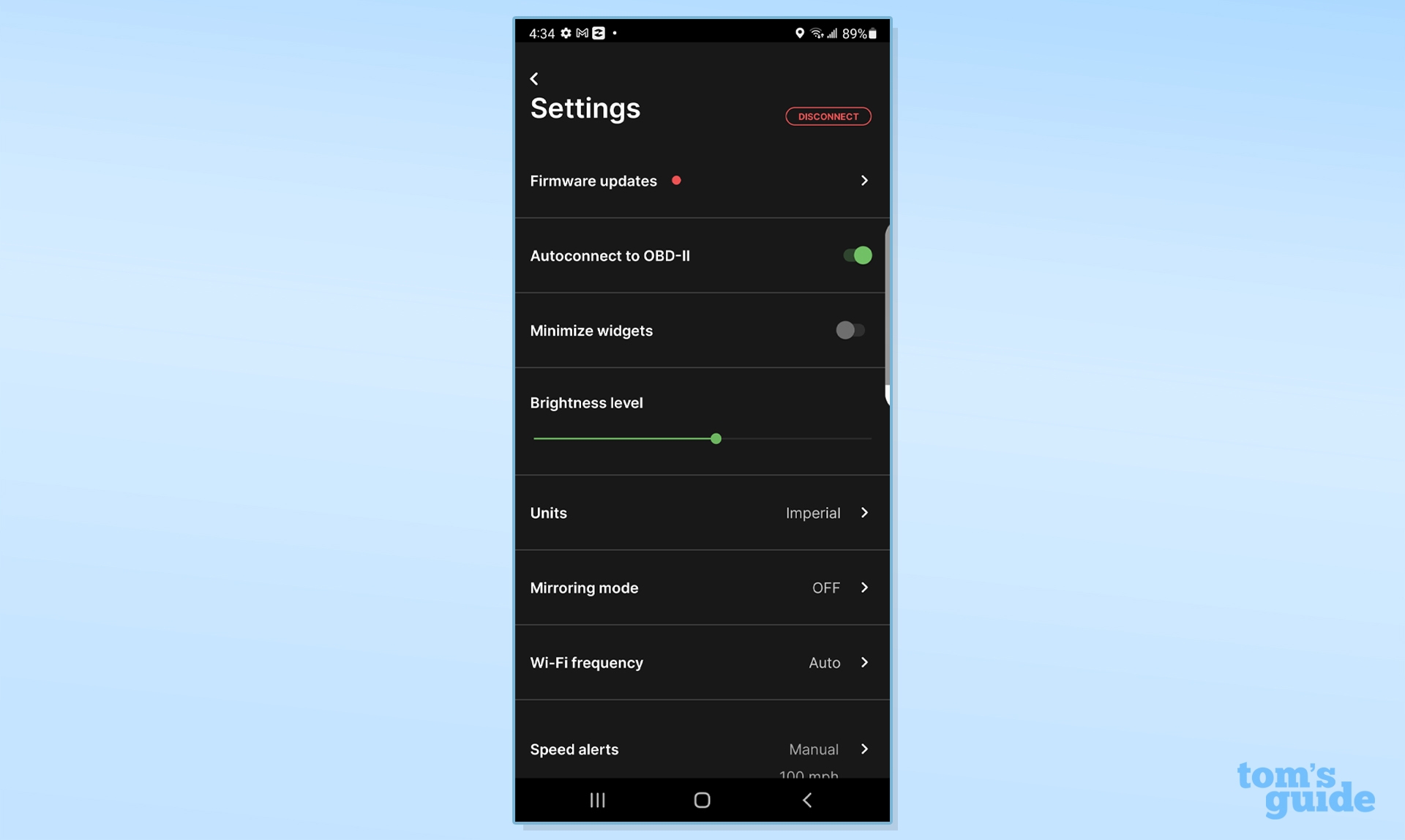
After aiming the projector’s cross hairs to best place the screen, the Hudway Drive was road ready. It took about 5 minutes to get it all up and running.
The device can sit above the steering wheel or closer to the center of the dash, and generally stays in place. Despite having excellent online help, the Drive unit doesn’t have a printable manual — but it does come with a fold open start-up guide and a one-year warranty.
Hudway Drive review: Performance
It took 10 seconds to start Drive up and it shuts off after you switch off the engine. The app’s Freeride view shows the car’s speed, average and maximum speed, as well as temperature and time.
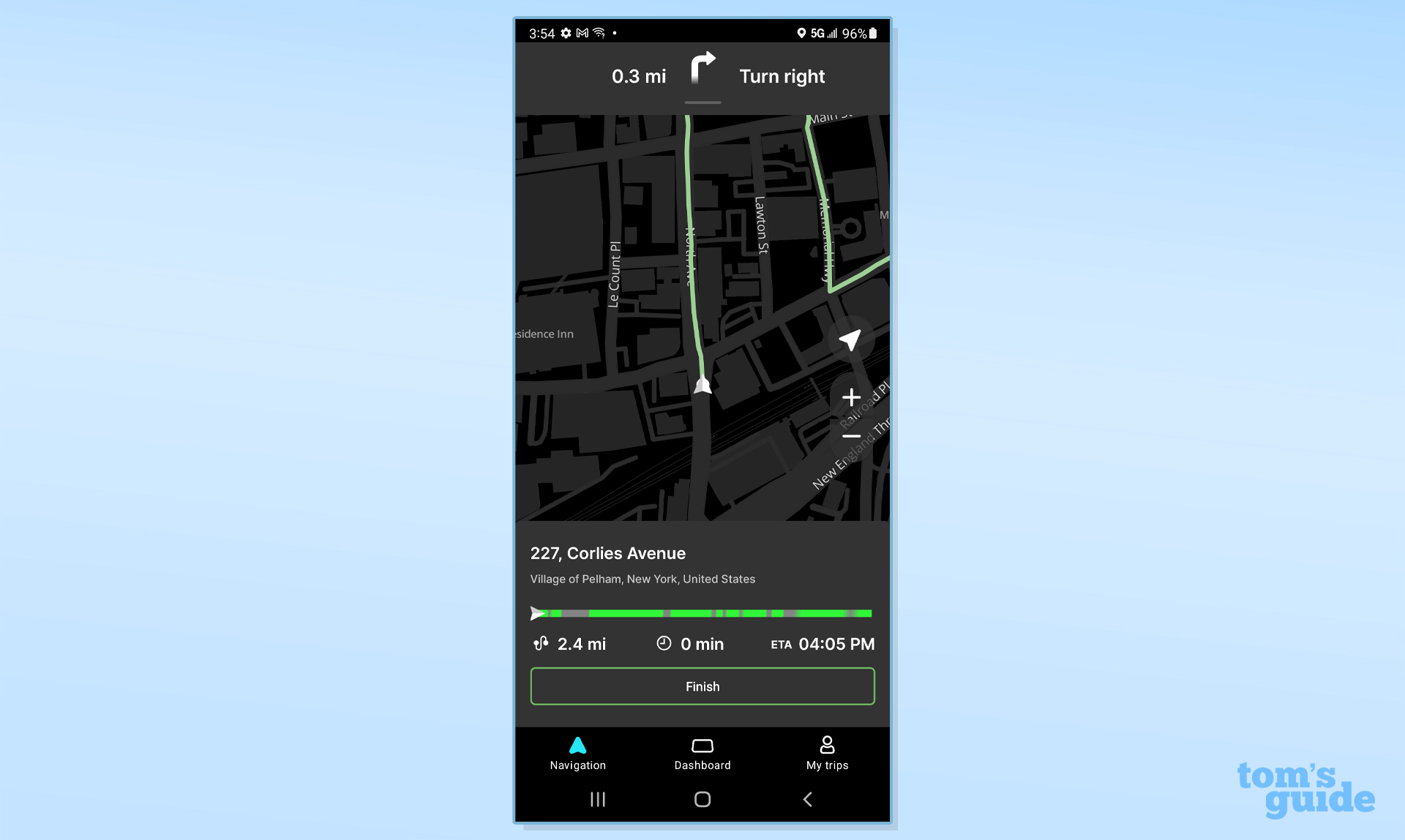
Meanwhile the Navigation view displayed street-by-street directions, current speed and time to the destination. It sometimes truncates directions that are too long to fit on the screen and doesn’t show maps. However the plan is to include 3D maps in the future.
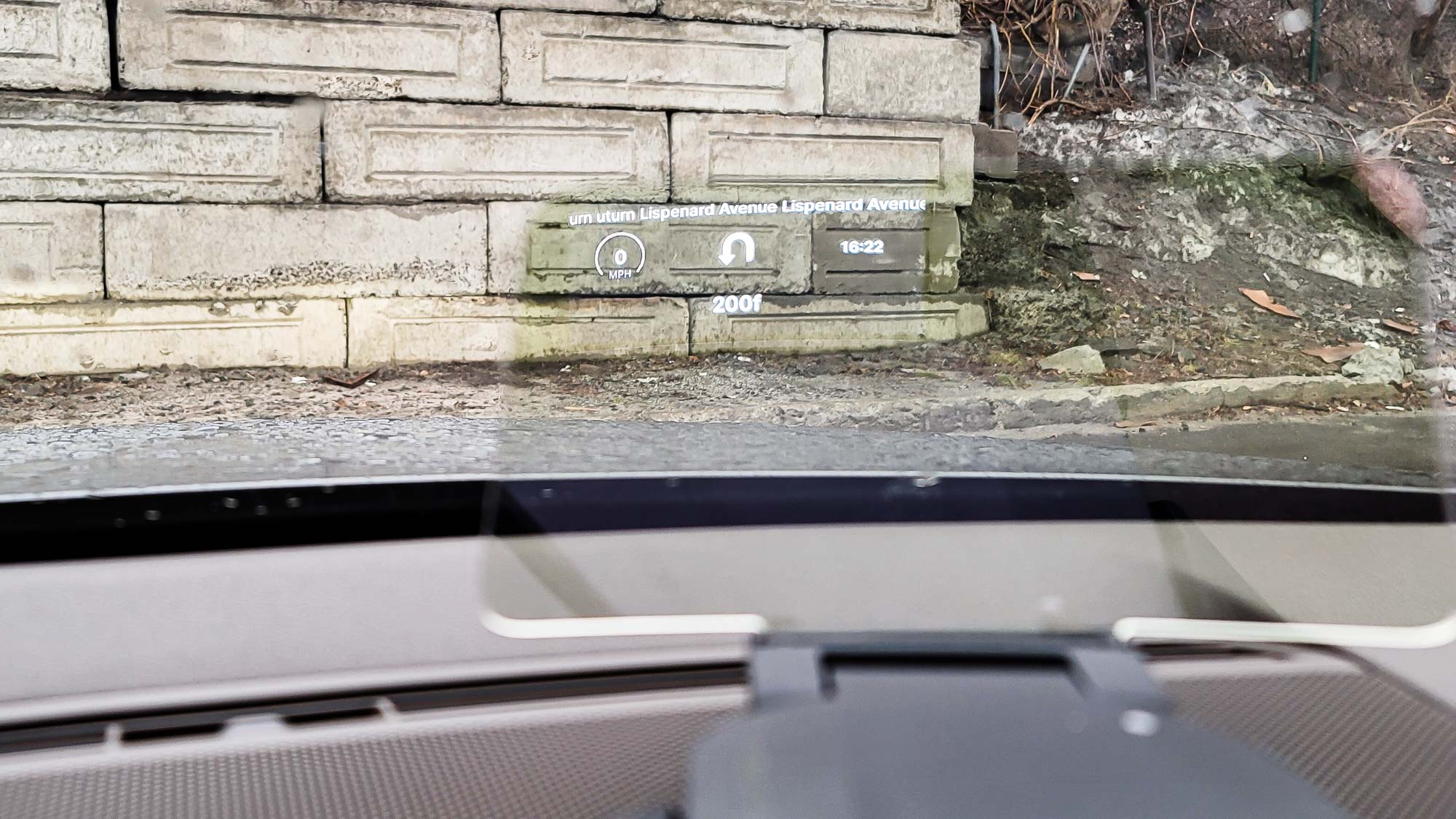
During several drives, the unit kept up with changes to the car’s speed and GPS directions. Other than the prominent speedometer, the Drive relies on numbers and words rather than the Dagood’s A8’s excellent use of visual graphics. As a result the Drive tends to put a lot of information in your face.
On the downside, the HUD’s size can get in the way of your view of the road, and does without the acceleration and braking tests on the Akabane A500. Still, the Hudway Drive is the best way to get automotive information while driving.
Hudway Drive review: Bottom line
By combining the best parts of on-board diagnostics and your phone with a projector, the Hudway Drive can show what’s going on inside your car without your eyes leaving the road. In short, it has everything you would expect from an in-car HUD and so much more.
That means you have an additional screen with navigation directions, text messaging and phone call support, on top of stats about speed, mileage and so on. It’s one of the most expensive HUDs around, with a $279 price tag, but for those of you that need to know the most important parts of your wide, it’s well worth it.
In addition to the expected items, Drive shows directions and texts, while allowing texts and phone calls to go through. At $279, it’s among the most expensive HUDs around but is worth it for those who need to know the most important aspects of their ride.
Brian Nadel is a freelance writer and editor who specializes in technology reporting and reviewing. He works out of the suburban New York City area and has covered topics from nuclear power plants and Wi-Fi routers to cars and tablets. The former editor-in-chief of Mobile Computing and Communications, Nadel is the recipient of the TransPacific Writing Award.
-
Don999 Looks like a great product on paper -- if you can get one. However, I ordered one two years ago and still have not received it. Hudway keeps claiming supply chain and COVID delays. Anyone else having this problem?Reply -
ronybilling I ordered a Hudway 14 months ago and have continually been told it will take longer than anticipated to receive my order. Today I requested a refund and was told they did not have the money to refund me at this time and that it could take up to two months to get a refund.Reply
I would stir clear of this company...


